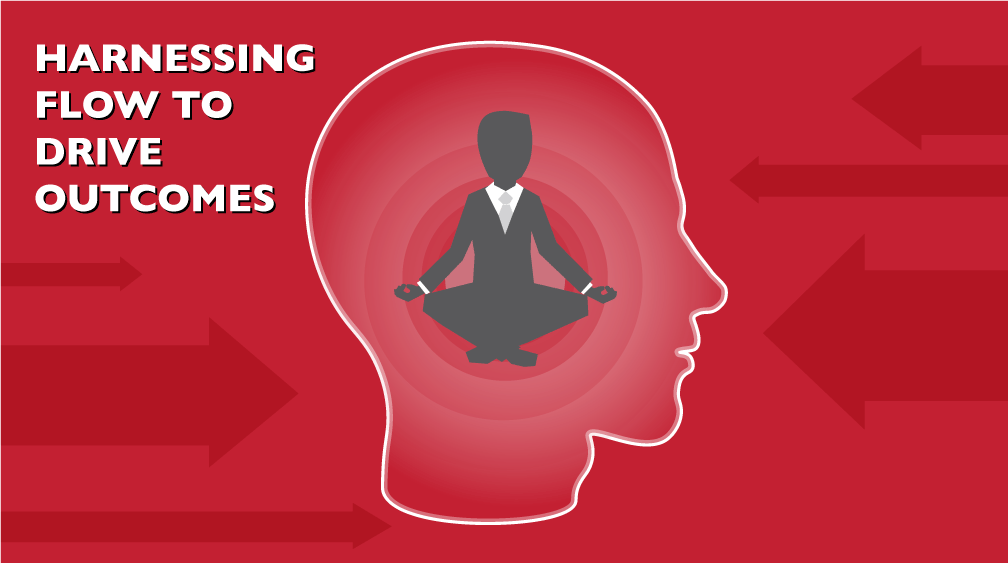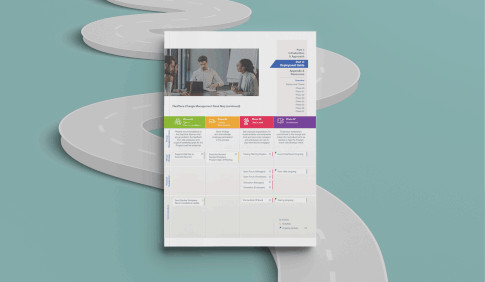In February, I explored the topic of Flow and provided tips on how to harness Flow in service of the outcomes that matter most to you – at work and in life. Fresh off the new year, so much felt possible. In so many ways, the world has changed drastically since we took our first look at Flow together.
Just because our world looks different today than it did in February doesn’t mean the possibility we explored is gone. Much is still available. At this critical juncture in time, it feels important to take our February insights and apply them to a larger scale – how we can collectively harness Flow in the context of organizations.
Flow in Organizations: A Case Study
Over seventy years ago, Masaru Ibuka founded the company we know today as Sony. One of his first actions was to publish a series of statements he called “Purposes of Incorporation,” a vision of the future organization Ibuka dreamed to create. The very first Purpose of Incorporation statement reads as follows:
“To establish a place of work where engineers can feel the joy of technological innovation, be aware of their mission to society, and work to their heart’s content.”
Sony’s de facto mission statement says nothing about transistors, radio receivers – technology of any kind. It does not focus on products, services, profits, or growth. What it envisions delivering into the marketplace is nowhere to be found. Instead, the words are carefully crafted to inspire, challenge, and give permission to its staff to seek contentment through their chosen profession – in essence, flow in practice in the work environment. The father of Flow, Mihaly Csikszentmihaly, refers to Ibuka’s first Statement as “the perfect description of how flow functions in the workplace.” (Good Business: Leadership, Flow, and the Making of Meaning)
How do groups, teams, and companies take the critical insights that Flow uncovers and apply them at an organizational scale? Here are three actions you can take to leverage Flow inside your organization.
Seek Meaning in Your Work – Don’t Stop till You Do
No one can tell you what your values and personal meaning are or should be at work. Finding meaning takes searching, trial and error, and a willingness to fail, and that meaning can take different forms. Some discover meaning at work by contributing to a powerful mission like defending the environment or promoting social justice. Others derive their meaning from partnering with people they care about – colleagues and clients for example. Still, others derive meaning from the opportunity to deploy a specific talent, gift, or skill – teaching or dancing for example.
No matter which avenue provides the most meaning to you, it’s critical to feel meaning in your work. Ask yourself: do you feel a sense of purpose and meaning from alignment with organizational mission, partnering with people, or getting to use one of your talents?
It might be necessary to abandon comfort in search of an opportunity that more closely aligns with your values and give you the best chance to find meaning in your work. It is possible to be professionally challenged, fulfilled, happy, and positively defined. Seek and you will find.
Find Flow With Another
Residents of the Japanese island of Okinawa live considerably longer than most. It’s no coincidence their level of happiness is also higher than average. Okinawa is one of the world’s five designated Blue Zones, areas with the highest average life expectancy. Okinawans don’t just live long lives – they lead good lives.
One key facet of Okinawan life is the concept of moai – a formal, life-long bond between a small group of approximately five individuals. Members of this group meet regularly and function as a social safety net in times of great hardship (family death, illness, etc.) Moai is the first place an individual goes to share big news – good, bad, and in-between. In effect, they almost single-handedly eradicate feelings of personal and social isolation. The impact of inclusion and a sense of belonging on quality of life cannot be underestimated.
The good news is that you don’t need to be a member of an Okinawan Moai to find flow with a coworker or work partner – a shared pursuit that you care about greatly increases your chances of finding true meaning in a professional context. Increase your odds of success by pursuing an idea with an interested individual, who learns and focuses in similar environments, and who is willing to take some low to medium-grade risk together without judgment.
Seek Out Flow-Adjacent States – Alone at First, Then With Teams
Flow is just one of eight key mental states that Csikszentmihaly identified in his decades of research. When arrayed on an x-axis of skill and y-axis of challenge level, the mental states of Arousal and Control appear on either side of Flow. As Flow is an optimal state and inherently more difficult to achieve, one system hack is to deliberately step into situations that slightly exceed your current skill level (Arousal) or situations where you don’t need to use all available skills to meet a challenge (Control).
For example, you can enter into an Arousal state by agreeing to lead the creation of a product that you know will present a true challenge, and which will require some quick up-skilling above what you currently possess. In this state, you feel almost over-alert, as you’re deliberately testing the boundaries of what you can comfortably perform. A Control state could look like agreeing to lead the creation of a product that you have experience performing multiple times in the past. The overall challenge presented by this endeavor is lower, and you know your skill level is commensurate with what you’re asking of yourself. As both of these mental states share a border with Flow, you can more readily access a Flow state by seeking out Arousal or Control states and fine-tuning the level of challenge and skill required.
Once you’ve explored Flow-adjacent states and how to access Flow alone and with a partner, consider the same approach with a team. Work to expand your concentric circles to include increasingly larger groups as you become more proficient. Remember, more people equals more complexity, so hold your insights loosely and be prepared to explore wholly new territory when scaling Flow.
Do you have a story to share about a flow state? Do you want to collaborate on flow, personal purpose, or organizational potential? Reach out to me via email.


